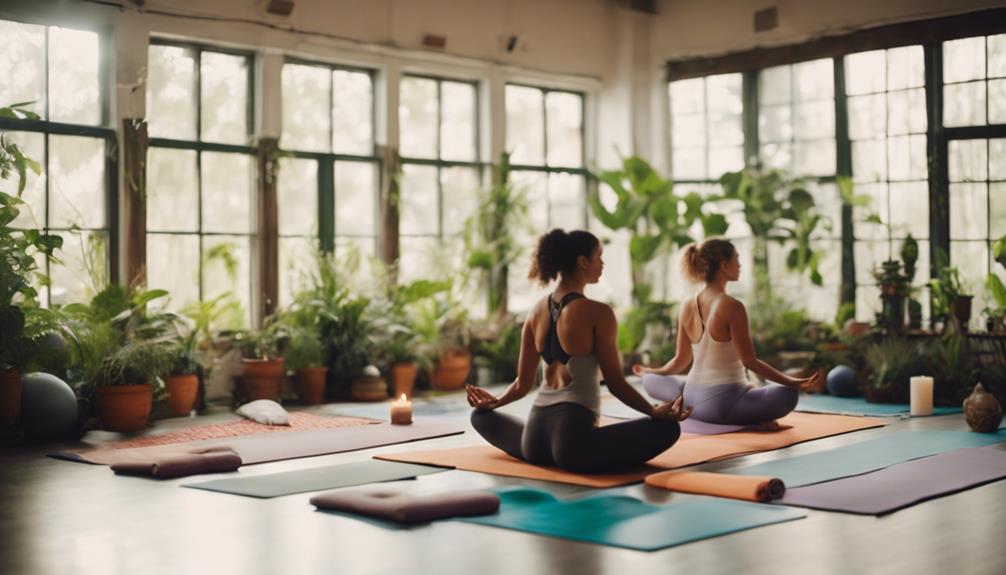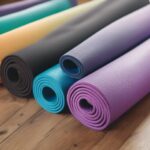Ehlers-Danlos Syndrome (EDS) is a group of connective tissue disorders that can significantly impact mobility and overall quality of life. Individuals with EDS often experience joint hypermobility, skin elasticity, and tissue fragility, leading to chronic pain and fatigue. For many, managing these symptoms can be challenging, but integrative approaches such as yoga have emerged as beneficial tools for enhancing physical and emotional well-being. This article explores the relationship between yoga and Ehlers-Danlos, offering insights into how yoga can be adapted to fit the needs of individuals with this condition.
The practice of yoga focuses on the mind-body connection, promoting relaxation, strength, and flexibility through various postures and breathing exercises. For those with EDS, yoga can provide a low-impact option to strengthen muscles, improve joint stability, and reduce pain. However, it is essential to approach yoga mindfully and with proper guidance to avoid exacerbating symptoms. This article will delve into the various aspects of incorporating yoga into the lifestyle of a person living with Ehlers-Danlos Syndrome.Fire Horse YogaYoga In Practice Season 4
Understanding Ehlers-Danlos Syndrome: An Overview
Ehlers-Danlos Syndrome encompasses a spectrum of genetic connective tissue disorders, characterized by a range of symptoms including hypermobility, skin that is easily bruised, and a tendency towards joint dislocations. There are multiple types of EDS, each with distinct features, yet all share the commonality of weakened connective tissues. This can lead to complications beyond the musculoskeletal system, affecting the cardiovascular system, skin, and internal organs.
The diagnosis of EDS often involves a combination of clinical evaluation, family history, and genetic testing. Living with EDS can be difficult, as symptoms often lead to chronic pain and fatigue, impacting daily activities and overall well-being. Understanding the condition is crucial for individuals and their support networks, as it informs the management strategies, including the potential role of yoga in enhancing quality of life.
The Role of Yoga in Managing Ehlers-Danlos Symptoms
Yoga is increasingly recognized for its therapeutic benefits in managing chronic conditions, including Ehlers-Danlos Syndrome. The practice emphasizes gentle movement, which can enhance physical stability while minimizing the risk of injury. Yoga can also promote relaxation and stress relief, addressing the emotional toll that chronic pain and fatigue can impose on individuals with EDS.
Incorporating yoga into a daily routine can help individuals with EDS develop greater body awareness, improve posture, and strengthen the muscles surrounding hypermobile joints. This can lead to increased joint stability, which is especially important for those prone to dislocations. Additionally, the mindfulness aspects of yoga may assist in managing anxiety and depression often associated with chronic health conditions.
Benefits of Yoga for Individuals with Ehlers-Danlos
The benefits of yoga for individuals with Ehlers-Danlos extend beyond physical health. Regular practice can enhance flexibility, strength, and balance, all of which are essential for managing the symptoms of EDS. Improved strength around joints can lead to better alignment and reduced pain, allowing for increased participation in daily activities.
Moreover, yoga encourages relaxation and mindfulness, which can help mitigate the stress and anxiety that frequently accompany chronic conditions. The practice fosters a supportive environment for individuals to connect with their bodies, promoting a sense of empowerment and improved body image. This holistic approach can significantly enhance the overall quality of life for those affected by EDS.
Key Considerations Before Starting Yoga Practice
Before embarking on a yoga journey, individuals with Ehlers-Danlos should consider their specific symptoms and limitations. It is crucial to consult with healthcare providers to discuss any concerns or restrictions regarding physical activity. Understanding personal boundaries and knowing when to modify or skip certain poses can help prevent injury and ensure a positive experience.
Additionally, individuals should be aware of their energy levels and how they fluctuate in relation to their condition. Starting with shorter sessions and gradually increasing duration as comfort and strength develop can be an effective strategy. Listening to one’s body is essential in yoga practice, providing a foundation for developing a sustainable routine.
Gentle Yoga Styles Suitable for Ehlers-Danlos Patients
When selecting a yoga style, individuals with Ehlers-Danlos may benefit from gentler practices that emphasize restorative movements. Hatha yoga is a common choice, focusing on basic postures and breath awareness, making it accessible for beginners. Yin yoga, which involves holding stretches for extended periods, can also be beneficial as it encourages deep relaxation and flexibility without strain.
Restorative yoga is another excellent option, utilizing props to support the body in passive stretches. This style allows individuals to relax deeply, release tension, and promote healing without excessive physical exertion. Choosing a gentle yoga style tailored to personal needs can facilitate a safer and more enjoyable experience.
Essential Poses to Include in Your Yoga Routine
Incorporating specific yoga poses into a routine can enhance strength and flexibility while accommodating the needs of individuals with Ehlers-Danlos. Some essential poses include Child’s Pose, which gently stretches the spine and promotes relaxation, and Cat-Cow Pose, which encourages spinal mobility and awareness. The Bridge Pose can help strengthen the lower back and buttocks, providing stability for the pelvis.
Other beneficial poses include Seated Forward Bend, which promotes hamstring flexibility, and Supported Warrior II, which builds strength in the legs without excessive strain on the joints. Always remember to practice within personal limits, modifying poses as necessary to ensure comfort and safety.
Modifications and Props to Enhance Your Practice
Using props is a valuable strategy for individuals with Ehlers-Danlos, as they provide support and facilitate proper alignment during yoga practice. Common props include blocks, straps, bolsters, and blankets, which can assist in modifying poses to suit individual needs. For example, using a block under the hands in forward bends can reduce strain on the back and make the pose more accessible.
Modifications can also help accommodate specific symptoms. If a pose feels uncomfortable, exploring variations or using props to create a gentler version can allow practitioners to enjoy the benefits of yoga without compromising safety. Working with a knowledgeable instructor can provide additional guidance on effective modifications suited to individual health concerns.
Breathing Techniques to Support Your Yoga Journey
Breathing techniques, or pranayama, are integral to yoga practice and can greatly enhance the experience for individuals with Ehlers-Danlos. Deep, controlled breathing can promote relaxation, reduce anxiety, and improve oxygen flow throughout the body. Techniques such as diaphragmatic breathing can help individuals connect with their bodies, emphasizing the importance of breath in facilitating movement and mindfulness during practice.
Incorporating specific breathing practices into the yoga routine can also help manage pain and tension. For instance, extended exhalation can activate the parasympathetic nervous system, promoting relaxation and easing discomfort. Developing a consistent breath practice can complement physical postures, creating a holistic approach to managing Ehlers-Danlos symptoms.
Finding the Right Yoga Instructor for Your Needs
Selecting a qualified yoga instructor is crucial for individuals with Ehlers-Danlos. It is essential to find someone experienced in working with students who have specific health concerns, as they will be better equipped to provide modifications and accommodate individual needs. Look for instructors who have additional training in therapeutic or adaptive yoga, as they can offer a more personalized approach.
When searching for an instructor, consider attending introductory classes to gauge the teaching style and the instructor’s understanding of EDS. A good instructor will prioritize safety, encourage open communication about limitations, and create a supportive environment in which individuals can thrive.
Tips for Maintaining Consistency in Yoga Practice
Maintaining a consistent yoga practice can be challenging, particularly for individuals managing Ehlers-Danlos symptoms. Setting realistic goals and creating a structured schedule can help encourage regular engagement with yoga. Incorporating short sessions into daily routines can foster a habit, making it easier to stay committed to the practice.
Additionally, finding a supportive community can significantly enhance motivation. Consider joining classes, both in-person and online, to connect with others who share similar experiences. Sharing the journey of yoga with others can provide encouragement and inspiration, making the practice feel less solitary and more fulfilling.
In conclusion, yoga can serve as a valuable and empowering tool for individuals living with Ehlers-Danlos Syndrome. By enhancing physical strength, promoting relaxation, and fostering a deeper connection to the body, yoga can help mitigate the challenges associated with this condition. It is essential to approach the practice mindfully, utilizing gentle styles, appropriate modifications, and supportive props. With the right guidance and a commitment to consistency, individuals can harness the transformative power of yoga to improve their quality of life and manage EDS symptoms effectively.


